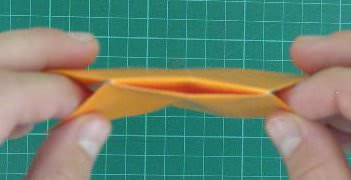Origami Tip - Folding a Closed Sink
This article is part of the Origami Tips series from the old Origami Tips website
A closed sink is one of the more dreaded folding sequences in Origami. Here is an explanation of how to fold a closed sink in two ways. The first is a general way, and the second is a more elegant method applicable only when you can unfold the model sufficiently.
First Method
In the pictures, I give an example of close sinking a petal fold in half. The text attempts to be more general.
- The first step to performing a closed-sink is to firmly crease the fold line. If the paper allows it, fold the crease in both directions.
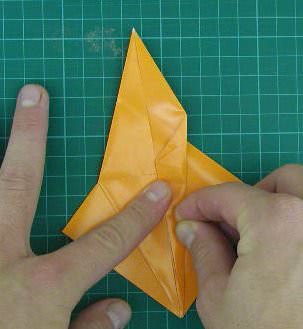
- If you can, try and look inside the model. Look at the inside, and identify the existing creases. What separates a closed-sink from an open one, is that these existing folds remain locked in place. In our example, the marked fold must remain in place. So place a finger as marked on the inside, and hold tightly.
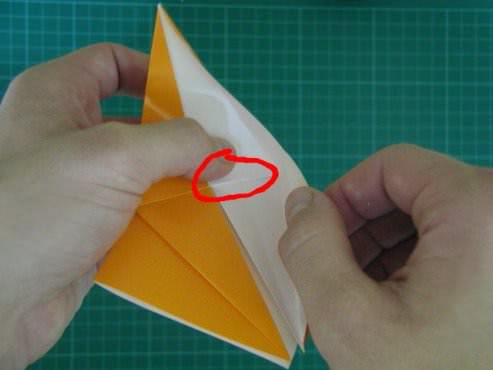
- Now, looking again from the outside, start pushing the corner inside. The key to this part is to use violence. We’ll worry later on straightening things out, so don’t worry if things get a bit crumpled right now. Use force!
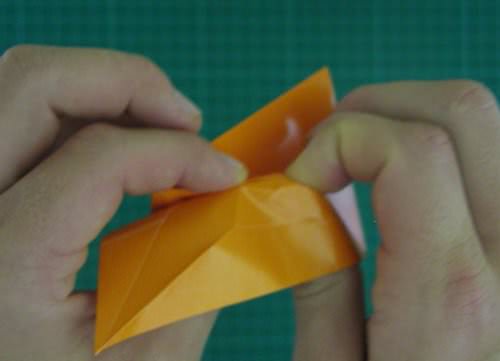
- Continue pushing inwards, and then start straightening along the crease lines from step 1.
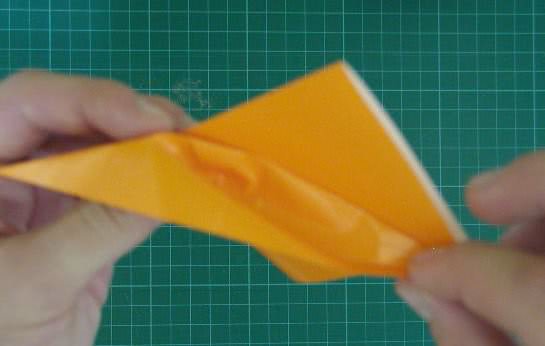
- Now, if you can, look once more on the inside. This is your chance to straighten everything out and make sure everything is flat exactly along the crease lines.
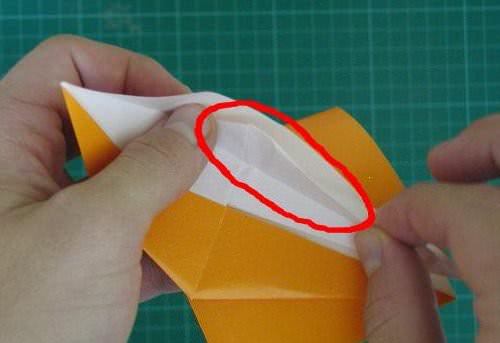
- Close everything back. You have completed the closed-sink fold!
Second Method
This method is better than the previous method, but it requires a bit of thought and intuition, and, more importantly, the ability to unfold much of the model. The idea of this method is to understand how everything needs to fold into place. This is different for various folds, so below is a step-by- step example of folding a close-sink on the tip of a preliminary base.
- We start by marking the crease we want to sink on, and then unfold as much as possible.
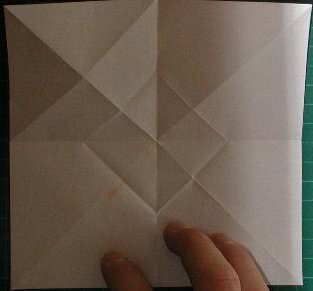
- If we understand the crease-pattern of the closed sink, we can understand which folds need to be made. In this example, we start by mountain folding along the diagonal. In an open sink, this line would have been a valley fold. For a closed sink, it’s a mountain.
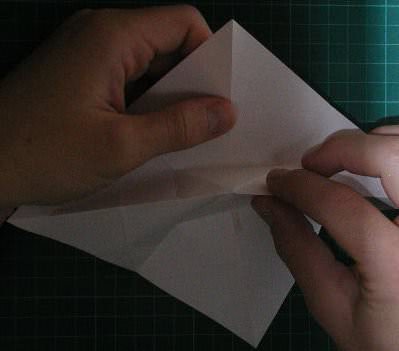
- We next fold the diagonal line together, by folding inside the internal square. This is the key to the closed-sink, in that it locks the layers together.
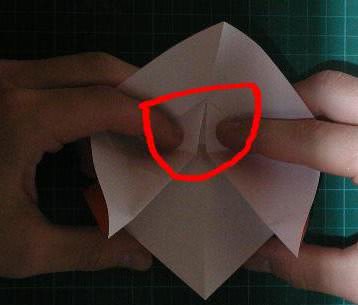
- And finally, we close everything up to get the closed sink.
